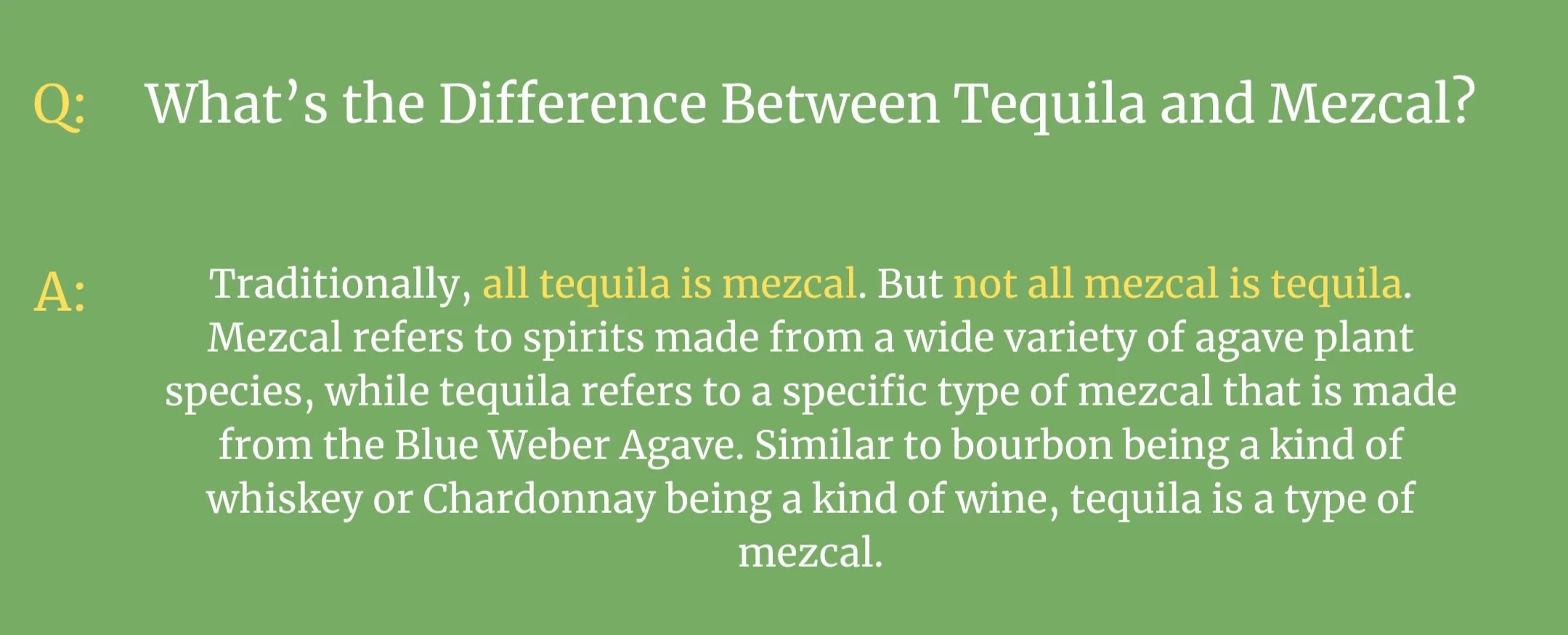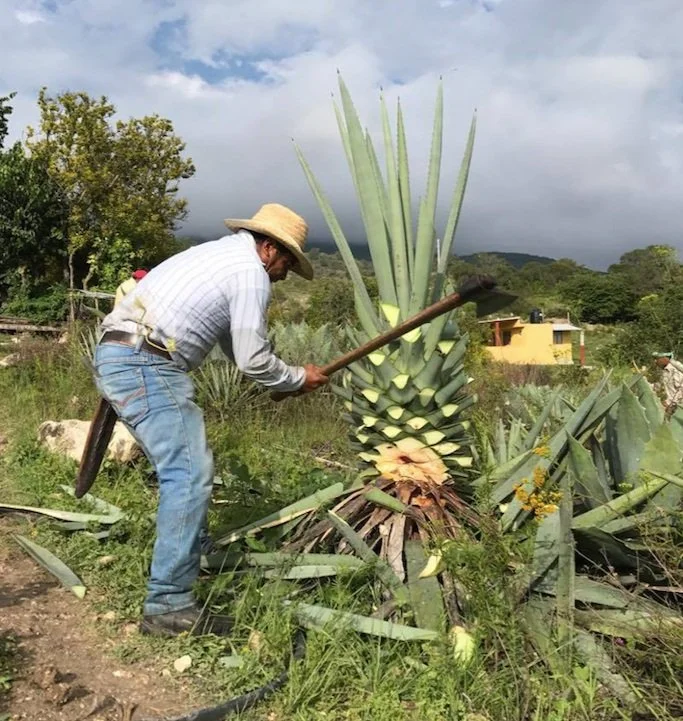Agave: Spirit (and Food) of the Borderlands
Agave (Genus Agave) is one of the most iconic plants of the desert Southwest, with over 200 species native to the U.S. and Mexico. If you know agave beyond that beautiful plant in your yard, your next thought is probably tequila. Though the tequila and mezcal market has boomed in the last 20 years - growing over 350% - we want you know know that agave is more than just tequila.
Known for its resilience and versatility, agave has been cultivated for centuries by Indigenous peoples for food, fiber, medicine and spiritual practices. Now, agave offers a lower glycemic index to sugar and a vegan alternative to honey; small-batch agave syrups offer smoky richness and complexity on par with artisan maple syrups. Plus, agave syrup dissolves easily in cold drinks - perfect for the iced coffee that is a balm to Arizona heat.
What makes agave unique? This remarkable plant thrives in arid conditions, requiring little water while offering a wealth of benefits to both the environment and local communities. Unlike most crops that require seasonal replanting, agave is a long-lived succulent that stores sap in its core for years before producing a towering flowering stalk. Often called the “century plant,” it typically flowers once every 10 to 30 years before completing its life cycle. However, it reproduces naturally through small offshoots, known as pups (hijuelos), ensuring future generations of plants.
From its deep cultural roots to its modern culinary applications, agave remains a vital part of Arizona’s food and agricultural landscape.
Agave roast at Mission Garden
A Heritage Crop of the Southwest
Indigenous peoples such as the Hohokam, O’odham, Apache, Hualapai, and Yavapai have cultivated agave for thousands of years, developing sophisticated farming techniques to maximize its growth in harsh desert climates. The Hohokam, for example, cultivated at least four types of agaves, planting them on slopes and surrounding them with rock piles to capture rainfall and protect them from small rodents.
Agave remains a key ingredient in traditional foods and beverages. The plant’s core (piña) is roasted in underground pits, imparting a rich, smoky flavor. Its sap can be fermented into pulque or distilled into mezcal and tequila. Today, organizations such as the Mission Garden in Tucson and S.A.C.R.E.D. work to preserve historic agave farming practices, hosting events like the Agave Heritage Festival to celebrate this remarkable plant.
Agave Uses
Food
Agave syrup
Roasted hearts, called piñas
Edible stalks
Mezcal (distilled agave spirit)
Tequila (mezcal made from Blue Weber agave)
Bacanora (mezcal from Sonora)
Pulque (fermented sap)
Inulin (a type of prebiotic and soluble fiber)
Fiber & Materials
Textiles
Sandals
Baskets
Biofuels
Construction materials
Fire starters
Dish scrubbers
Body sponges
Musical instruments
Nutritional Powerhouse
Agave isn’t just a flavorful ingredient—it’s also packed with nutritional benefits:
Low Glycemic Index – Agave syrup has a GI of around 17-30, significantly lower than sugar (GI ~65), resulting in a slower release of sugars into the bloodstream.
Sweeter Than Sugar – Requires less syrup to achieve the same level of sweetness, making it an efficient natural sweetener.
Rich in Minerals – Provides small amounts of calcium, potassium, and magnesium.
Supports Gut Health – Contains inulin, a prebiotic fiber that promotes healthy digestion.
Vegan Alternative to Honey – Works well in beverages, baked goods, and dressings.
Depending on how it’s processed, agave syrup can have a mild, neutral flavor ideal for cold drinks (as it dissolves easily) or a more robust, molasses-like taste when produced through traditional small-batch methods.
Agave being harvested
How Agave is Grown and Harvested
Agave is one of the most sustainable crops in Arizona, thriving in extreme conditions where other plants struggle. It:
Requires Minimal Water – Can survive with little to no irrigation and tolerates temperatures up to 140°F.
Improves Soil Health – Its deep roots help prevent erosion and retain moisture.
Grows in High-Salinity Soils – Making it a viable option for otherwise unproductive lands.
Uses Efficient Photosynthesis – Switches to CAM (Crassulacean Acid Metabolism) photosynthesis in drought conditions, reducing water loss.
Reduces Greenhouse Gases - When intercropped with trees, which fix nitrogen in the soil, agave can draw down and sequester massive amounts of atmospheric carbon dioxide - about 12 - 24 tons per acre per year. This is the focus of the Billion Agave Project.
Traditional agave roasting enhances its flavor, similar to the process used for mezcal production. The hearts are buried in an underground pit, heated with coals, and covered for several days, resulting in a deep, smoky, slightly bitter-sweet taste.
Tequila, Mezcal & Beyond
Agave-based spirits have seen tremendous growth in the U.S., with tequila sales increasing 356% from 2002 to 2023. While tequila is a specific type of mezcal made from Blue Weber Agave, other agave varieties produce distinctive flavors in mezcal and regional spirits like bacanora (mezcal made in Sonora).
However, agave farmers face increasing challenges. Large beer companies pressure farmers to replace agave fields with barley, threatening biodiversity and traditional growing practices. Supporting small-scale, sustainable agave producers helps preserve these cultural traditions and ensures a future for high-quality, responsibly grown agave products.
Open Fermentation, which is more labor-intensive but produces superior taste
Closed Fermentation
Cooking agave syrup
A Sustainable and Cultural Staple
Agave is more than just a source of sweetener or spirits—it’s a symbol of resilience, tradition, and sustainability in the Southwest. Whether enjoyed in a handcrafted mezcal, a traditional roasted dish, or as a natural alternative to refined sugars, agave remains a cornerstone of Arizona’s food heritage.
By incorporating agave into your diet and supporting Indigenous growers, you’re not just savoring a unique and flavorful ingredient—you’re helping to preserve centuries-old agricultural practices and protect one of the desert’s most remarkable plants.
Agave is a vital crop in Arizona, celebrated for its deep Indigenous roots, nutritional benefits, and sustainability. Used for centuries in food, fiber, and beverages, agave thrives in harsh desert climates while providing a rich source of minerals and prebiotic fiber. From mezcal to agave syrup, this plant continues to shape Arizona’s culinary scene. Supporting local and Indigenous agave producers ensures the preservation of traditional farming techniques and the sustainability of this remarkable desert plant.
Learn More
Read our blog Agave is More Than Tequila
Celebrate agave at the Agave Heritage Festival in Tucson, hosted yearly in mid-April
Watch this video on roasting agave at Mission Garden
Read more about the Billion Agave Project and its agave-driven fight against climate-change
Learn more about the Arizona Alliance for Climate-Smart Crops
Different varieties of agave starts at Mission Garden









